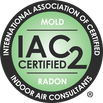Mike's Home Inspector BlogMichael Burfitt |
|
I have made it clear that, like most home inspectors, I have an overall negative view of flipped homes, which are homes that are bought to be renovated and quickly re-sold. That’s not to say flippers are all greedy and/or incompetent people but the simple fact is, partly due to various TV shows, the real estate market currently incentivizes investing in the style of the home instead of structural or system updates. Oftentimes the expensive items are usually neglected in a home flip and some “improvements” can even shorten the life of a home. One of the biggest faux pas that I see in flipped homes is the painting of the home’s bricks, particularly its chimney.
Moisture is the #1 Enemy of Homes and Bricks I sound like a broken record, but it bears repeating again and again. Two of the big myths I hear about home exteriors are that bricks are waterproof or the opposite, that bricks are porous (absorb water) and paint can help seal against water intrusion. Both are incorrect and painting the chimney, while aesthetically pleasing is a bad idea from a maintenance standpoint. Bricks Need to Breathe! Painting a chimney will seal up the pores of bricks. While the obvious rebuttal would be to say it prevents moisture from reaching the brick in the first place, this is simply not realistic, especially in our wet climate. No matter how skilled a painter, moisture WILL eventually find a way behind the paint and will be trapped in the brickwork. This can lead to deterioration of the bricks and mortar and will lead to an expensive repair bill (or worse, complete failure!) down the road, and further damage by the rapid freeze/thaw cycles experienced here in Nova Scotia can contribute to the deterioration. It's Abandoned So Who Cares? Thanks to advances in heating technology, such as heat pumps and high efficiency direct vent furnaces/boilers, many homes in the city no longer use their fireplace. Once again, painting bricks can lead to long term structural failure and a falling brick can be deadly, regardless of whether it's being used or not! Paint Covers Problems A freshly painted chimney is a giant red flag to a home inspector. Paint can be used to hide issues such as cracked/soft mortar, damaged bricks, and the presence of efflorescence (white spots caused by salt deposits that indicate moisture issues). This is yet another reason to have a home inspected regularly by a professional. It’s Not THAT Simple Despite what I just wrote, there ARE some situations where painting is perfectly fine. Indoor bricks can usually be painted without issue because it doesn’t rain indoors (I hope!). There are also certain types of very old chimneys that need a specific type of paint. Always check with a chimney or masonry contractor before engaging in any painting of brick as the potential for long term damage isn’t worth the improvement in appearance! |
Archives
July 2024
Categories
All
|
|
Inside Edge Home Inspections Ltd.
Halifax, NS 902-209-9921 [email protected] Proudly Serving the HRM & Central Nova Scotia |

 RSS Feed
RSS Feed

